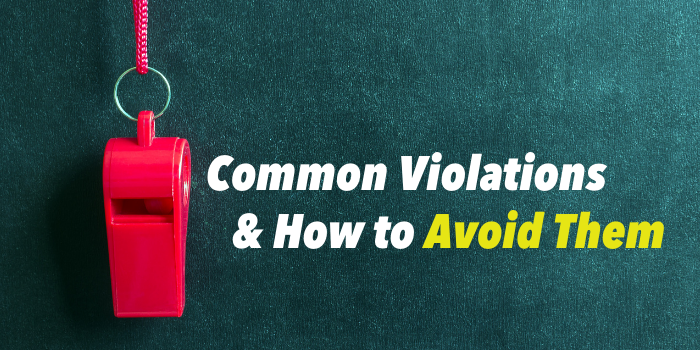Homeowners Associations (HOAs) play a vital role in maintaining the quality and appearance of communities. However, managing HOA violations can be a tricky task. Understanding the nuances of these violations and how to handle them effectively is crucial for both HOA boards and residents. Let’s delve into the specifics of HOA violations and the best practices for managing them efficiently.
Understanding HOA violations
HOA violations occur when residents fail to comply with community rules. These can range from minor infractions like leaving trash bins out too long to more significant issues such as unauthorized architectural modifications. Effective management of these violations is crucial for maintaining community standards and ensuring a harmonious living environment.
How to handle HOA violations
An integral part of successful HOA property management is knowing how to handle violations appropriately. Here are some key strategies:
1. Utilize technology
Modern technology offers robust solutions for managing HOA violations. Leveraging property management software can streamline the tracking and resolution processes. Innago, for instance, provides tools for online payments, community announcements, and maintenance request management, which are invaluable for keeping violations and their consequences well-documented and accessible.
2. Ensure legality in your rules
Legal compliance is non-negotiable. Ensure that all HOA rules and fines are legal by consulting with a lawyer familiar with state-specific regulations. For example, states such as Colorado require providing residents with notice and a grace period to address issues. Legal validation of these rules helps prevent unnecessary disputes and strengthens the HOA’s position when enforcing penalties.
3. Set up a violation tracking process
An organized process for tracking violations is essential. Establish a clear protocol for issuing violation notices and imposing fines. Utilize templates for warning letters and automate notifications where possible. Property management software can automate these processes, ensuring consistency and fairness across all residents.
4. Track violations in detail and enforce penalties fairly
Detailed record-keeping is crucial for enforcing penalties impartially. By documenting each violation meticulously, HOAs can ensure unbiased enforcement. This approach not only maintains order but also fosters trust within the community. Fair treatment of all residents in adherence to community guidelines reinforces the HOA’s authority and commitment to equality.
5. Lower the violation rate in your community
Prevention is often the best remedy. Reducing the occurrence of violations begins with clear communication. Make HOA bylaws easily accessible and educate residents on common infractions. Regular reminders and open lines of communication can significantly decrease the frequency of violations. Addressing both individual and widespread infractions proactively contributes to a cooperative community atmosphere.
Conclusion
Effectively handling HOA violations is a blend of clear communication, legal validation, and strategic management. By utilizing technology, establishing fair processes, and fostering open dialogue, HOA boards can manage violations efficiently and create a positive living environment for all residents. With the right tools and approach, communities can thrive under the stewardship of a well-organized HOA.



